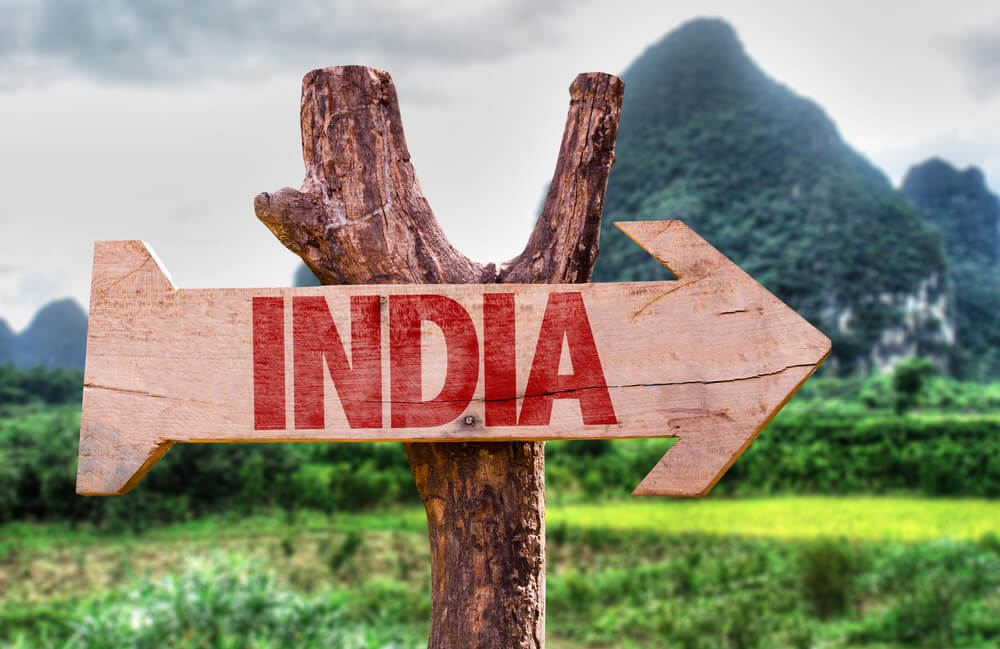India is an incredibly diverse and fascinating country located in the southern part of the Asian continent. It is home to some of the world’s oldest civilizations, with a culture and history that dates back thousands of years. India is a vibrant country with a population of over 1.3 billion people and is home to numerous languages, religions, and ethnic groups.
The moment you set foot in India, you’ll find yourself completely immersed in a world of mesmerizing colors, diverse cultures, and breathtaking landscapes. From the snow-capped mountains of the Himalayas in the north to the tropical beaches of the south, there is something for everyone in India. In this Travel Guide of India, we will provide an overview of India and essential travel tips for visiting the country.
Discovering the Regions of India

North India: Majestic Mountains and Rich Heritage
Exploring the Northern Region of India is a journey that takes you through the kaleidoscope of diverse cultures, rich history, and stunning landscapes that are unique to this captivating region. In addition, the northern part of India is a treasure trove of natural beauty, architectural marvels, and culinary delights, making it a must-visit destination for travelers seeking adventure, enlightenment, or simply an escape from the ordinary.
Nestled in the lap of the majestic Himalayas, the northern region of India is a haven for adventure enthusiasts and spiritual seekers alike. From the snow-capped peaks of Ladakh and the lush valleys of Kashmir to the sacred banks of the Ganges in Rishikesh, there is no dearth of breathtaking locales to explore. A trek through the numerous trails in Himachal Pradesh will lead you to picturesque villages, serene monasteries, and pristine alpine lakes, while a visit to the UNESCO World Heritage Site of the Great Himalayan National Park showcases the region’s remarkable biodiversity.
The northern region of India is also home to some of the country’s most iconic architectural wonders. Marvel at the grandeur of the Mughal-era Red Fort and the awe-inspiring beauty of the Taj Mahal in Agra, or delve into the intriguing history of the ancient forts and palaces of Rajasthan, such as the Amer Fort in Jaipur and the Mehrangarh Fort in Jodhpur. In the bustling city of Delhi, a seamless blend of modernity and tradition awaits you as you walk through the narrow lanes of Chandni Chowk or admire the contemporary architecture of the Lotus Temple.
Culinary aficionados will find themselves spoilt for choice in the northern region of India, where the cuisine is as diverse as the culture. From the succulent kebabs and fragrant biryanis of Lucknow to the hearty Rajasthani thalis and the lip-smacking street food of Delhi, many flavors are waiting to be discovered. The Northern region also boasts a rich tradition of arts and crafts, with the vibrant markets offering unique souvenirs, such as handcrafted jewelry, intricate textiles, and exquisite pottery.
South India: Sun-Kissed Beaches and Exquisite Temples
Embark on a captivating south India tour that promises an enchanting experience of sun-kissed beaches and exquisite temples. This diverse region, often referred to as the “soul of India,” is a treasure trove of cultural riches, unparalleled natural beauty, and tantalizing culinary delights. Your South India guide will help you uncover the best of this fascinating region.
The heart of south India lies in the vibrant state of Tamil Nadu, where the ancient city of Madurai proudly showcases the stunning Meenakshi Amman Temple, a UNESCO World Heritage site. Further south, the majestic shore temples of Mahabalipuram stand tall, narrating the story of a bygone era.
One must explore the southern paradise with a visit to the pristine beaches of Kerala and Goa. The golden sands of Kovalam and Varkala invite you to spend some leisurely time basking in the warmth of the sun, while the serene Palolem Beach in Goa offers a perfect retreat for a tranquil getaway.
A South India tour would be incomplete without a rendezvous with nature at the Periyar National Park, where the lush wilderness of the Western Ghats beckons you to discover the region’s diverse flora and fauna. Home to the elusive Bengal tiger and the Indian elephant, this national park is a must-visit for wildlife enthusiasts.
East India: Lush Landscapes and Tribal Traditions
The mesmerizing region of East India offers a delightful blend of natural splendor, rich cultural heritage, and warm hospitality. With an array of East India tourist places to explore, the region promises unforgettable experiences for every traveler. From Darjeeling’s verdant tea gardens to Odisha’s pristine beaches, eastern India tourist places are as diverse as they are captivating.
Begin your East India tourism adventure by delving into the fascinating history and culture of the eastern cities of India, such as Kolkata, the erstwhile capital of British India, and Bhubaneswar, the Temple City of India. These East Indian cities boast a wealth of architectural marvels and vibrant festivals that showcase the region’s rich heritage.
As you venture further into the eastern side of India, the lush landscapes of the seven sister states of Northeast India unfold before your eyes. Home to some of the best places to visit in east India, these states offer pristine forests, serene lakes, and vibrant tribal cultures waiting to be explored. Visit the largest river island in the world, Majuli, in Assam, and witness the unique culture and traditions of the Mishing tribe.
East India travel also offers a wealth of opportunities for nature and wildlife enthusiasts. The region boasts numerous national parks and wildlife sanctuaries teeming with diverse flora and fauna. The iconic Kaziranga National Park, a UNESCO World Heritage site, is renowned for its one-horned rhinoceros population, while the Sundarbans, the world’s largest mangrove forest, offers a chance to spot the elusive Bengal tiger.
Whether you’re seeking adventure, relaxation, or cultural immersion, east India places to visit cater to all tastes and preferences. The region’s scenic beauty, unique traditions, and delectable cuisine make it an ideal destination for travelers seeking to explore the lesser-known facets of India. Embark on your journey to discover the best tourist places in East India and create memories that will last a lifetime.
West India: Vibrant Cities and Desert Adventures
The enthralling western region of India beckons travelers with its diverse landscapes, vibrant culture, and rich history. From the verdant slopes of the Western Ghats to the sun-kissed beaches of Goa, western India offers a plethora of experiences to satiate the wanderlust of every traveler.
As you traverse the Western Ghats lush mountain range, a UNESCO World Heritage site, discover a remarkable array of flora and fauna, making it a paradise for nature enthusiasts. The picturesque hill stations, such as Mahabaleshwar and Matheran, nestled amidst these majestic mountains, offer panoramic views of the verdant valleys below.
Venture northwest to the vibrant state of Gujarat, where the ancient city of Ahmedabad, a UNESCO World Heritage City, boasts a blend of Indian and British architectural marvels. The Rann of Kutch, a vast salt marsh, entices visitors with its ethereal beauty and vibrant culture, showcased in the annual Rann Utsav festival.
In stark contrast to the serenity of the ghats, the bustling metropolis of Mumbai, the financial capital of India, offers a glimpse into the fast-paced urban life. The city’s rich food scene, thriving nightlife, and iconic landmarks like the Gateway of India make it an unmissable destination on any Indian tourism itinerary.
While South India and East India boast their unique allure, the charm of West India remains unparalleled. As you explore the diverse areas of this enchanting region, be prepared to be captivated by its natural beauty, fascinating history, and warm hospitality.
Best time of the year to visit India
Planning a trip to the mesmerizing land of India? It’s essential to know the best time of the year to visit India to make the most of your travel experience. With its diverse landscapes and climatic conditions, the ideal time to explore this vast country may vary depending on the region you want to visit.
For those who wish to discover the enchanting beauty of East India, the ideal time to visit is between October and March. During these months, you’ll enjoy pleasant weather and avoid the heavy monsoon rains. This region, known for its lush greenery and tea estates, is a visual treat during these sunny days.
Northern India, on the other hand, experiences extreme temperatures, with scorching summers and chilly winters. The perfect window to visit places like Delhi and Rajasthan falls between November and March. The climate is comfortable, allowing you to explore historical sites and vibrant markets without breaking a sweat.
The monsoon season, which typically lasts from June to September, brings torrential downpours to most parts of the country. However, this is also the best time to witness the lush green landscapes and blooming flowers in the Western Ghats and the hill stations of south India. In addition, it’s worth noting that the southern coastal regions can be visited throughout the year, thanks to their moderate weather.
Festival lovers will find that India is a year-round destination. With a plethora of celebrations taking place across the country, there’s always something happening to pique your interest. For instance, the vibrant Holi festival is celebrated in March, while Diwali, the festival of lights, usually occurs in October or November.
Packing Tips for India
When planning a trip to India, it’s crucial to pack smartly and thoughtfully, taking into account the country’s diverse climates, cultural norms, and unique experiences. Here are some essential packing tips to ensure a smooth and enjoyable journey.
First and foremost, adapting to India’s diverse weather conditions is key. The country’s climate can range from scorching heat to heavy monsoons to chilly winters. Therefore, researching your destinations’ weather patterns and packing is important. Lightweight, breathable clothing, a rain jacket, and a warm layer or two are recommended, as they can be easily layered to suit changing temperatures.
In terms of attire, clothing and modesty considerations should not be overlooked. India’s culture is steeped in tradition, and respecting local customs is essential. As a general rule, opt for loose-fitting clothing that covers your shoulders and knees, especially when visiting religious sites or conservative areas. Women may also want to carry a scarf or shawl to cover their heads when necessary.
Traveling with Family and Children to India
India is a vibrant and diverse country, offering a wealth of experiences for travelers of all ages. When traveling with family and children, it’s essential to plan your trip wisely, taking into consideration the specific needs and preferences of your loved ones.
One of the key aspects of planning a family trip to India is selecting the right family-friendly destinations and activities. This diverse nation has something for everyone, from historic forts and palaces to wildlife safaris, beaches, and cultural experiences. Include a mix of educational and entertaining activities to keep your young ones engaged and create lasting memories.
Another crucial element to consider is finding suitable accommodations catering to families. Opt for hotels and resorts that offer family rooms, child-friendly amenities, and kid-focused activities. Many establishments even provide babysitting services, allowing parents to enjoy a night out or indulge in some well-deserved relaxation time.
Finally, prepare for your journey by packing essential items for a hassle-free trip. This includes items such as travel-sized games and toys, snacks, and a well-stocked first-aid kit. In addition, remember to bring along age-appropriate clothing, sun protection, and any necessary medications. By planning and packing thoughtfully, you’ll ensure a smooth and enjoyable family vacation in India.
Travel Insurance and vaccine
Embarking on an adventure to India is an exciting prospect, but it’s essential to plan wisely and consider the importance of travel insurance for Indian trips. Comprehensive travel insurance can provide invaluable protection against unforeseen events, ensuring that your journey remains as stress-free as possible.
An important factor to consider is the access to healthcare in urban and rural areas. While major cities boast well-equipped hospitals and clinics, medical facilities in remote regions may be limited. Travel insurance can help cover the costs of medical treatment and, in serious cases, emergency evacuation to a better-equipped facility. This can be especially crucial for travelers with pre-existing medical conditions or those participating in adventure activities.
Furthermore, staying updated on the recommended vaccinations and first-aid essentials is vital before embarking on your trip. Consult a travel health professional to determine which vaccinations are necessary for your specific itinerary, and ensure you receive them well in advance. Additionally, pack a well-stocked first-aid kit containing over-the-counter medications, band-aids, and any prescription medications you may need.
The best cities in India: Unveiling India’s Must-Visit Cities
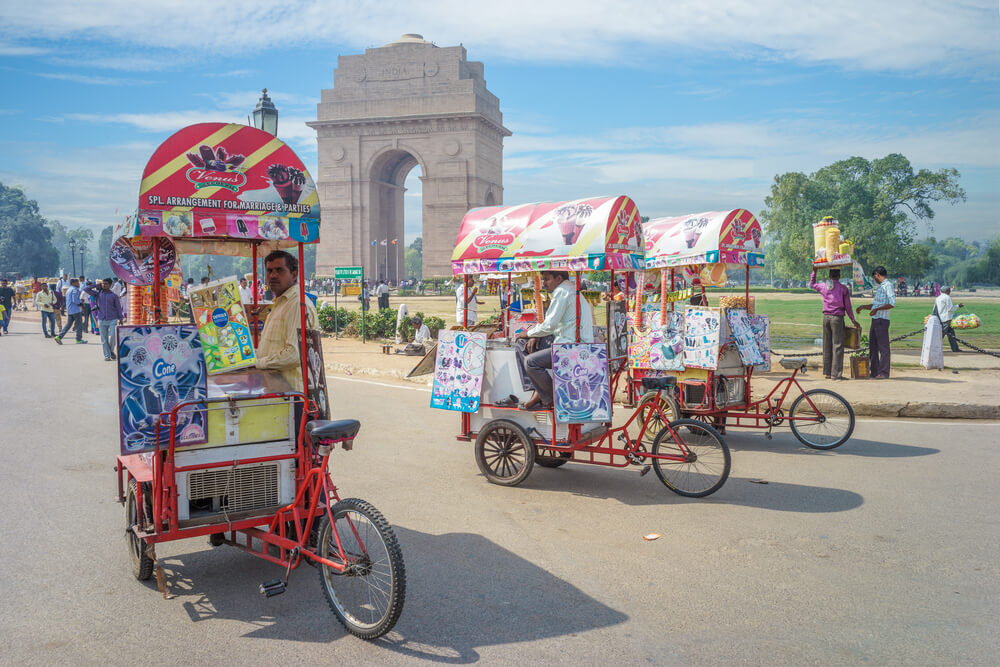
India is a land of remarkable diversity and is home to numerous awe-inspiring cities. These urban centers, teeming with life and culture, offer a unique blend of tradition and modernity. Here are ten cities to visit in India that you should consider for your next trip:
New Delhi: India’s bustling capital city boasts many architectural marvels and world heritage sites, such as the Qutub Minar and Humayun’s Tomb. With its vibrant street markets and delectable street food, Delhi is a haven for food enthusiasts and history buffs alike.
Agra: Known for the iconic Taj Mahal, this city in Uttar Pradesh houses other magnificent monuments like Agra Fort and Fatehpur Sikri. Agra is undoubtedly one of the best cities in India to visit for a glimpse into India’s glorious past.
Mumbai: The largest city in India, Mumbai is a melting pot of cultures and a thriving hub of commerce and entertainment. From the historic Gateway of India to the serene Marine Drive, Mumbai offers an unforgettable experience for every traveler.
Kolkata: As the cultural capital of West Bengal, Kolkata is home to numerous colonial-era buildings and vibrant festivals. The city’s rich literary and artistic heritage and mouth-watering cuisine make it one of India’s best cities.
Chennai: This bustling metropolis in Tamil Nadu boasts a rich cultural and historical legacy. The stunning temples, sun-kissed beaches, and the city’s thriving music and dance scene make Chennai one of the most beautiful cities in South India.
Jaipur: Known as the Pink City, Jaipur is replete with royal palaces, bustling bazaars, and majestic forts. This India-famous city in Rajasthan offers a glimpse into the opulence of India’s royal past.
Bengaluru: The Garden City of India, Bengaluru is known for its pleasant weather, lush green spaces, and thriving IT industry. Key attractions include the Bannerghatta National Park and the Adiyogi Shiva statue.
Pune: This charming city in Maharashtra is home to the historic Aga Khan Palace and the majestic Shaniwar Wada. With its rich history, pleasant weather, and close proximity to Mumbai, Pune is a must-visit destination.
Hyderabad: This city in Telangana, famous for its scrumptious biryani and historic landmarks, boasts the stunning Golconda Fort and the magnificent Charminar. Hyderabad’s unique blend of history and modernity makes it one of the top cities to visit in India.
Bhopal: The capital of Madhya Pradesh is renowned for its natural beauty, historical sites, and rich cultural heritage. Bhopal’s serene lakes, bustling markets, and close proximity to UNESCO World Heritage sites make it an ideal destination for travelers.
India tourist visas Information
One crucial aspect to consider before planning your tour to India is obtaining an Indian tourist visa. This document is essential for a smooth and hassle-free international travel experience, allowing you to explore the country’s rich culture and heritage without any worries.
An India tourist visa grants entry to foreign nationals intending to visit the country for leisure, sightseeing, or to meet friends and family. To apply for this visa, you will need to follow the visa application process, which has been significantly streamlined in recent years.
One major development in the Indian visa application process is the introduction of the India e-visa or electronic visa. The e-visa for India is available to citizens of over 160 countries, allowing travelers to apply for their visa online without needing to visit an Indian embassy or consulate in person.
The Indian visa application process involves:
- Filling out an online form with your personal and travel-related information.
- Uploading a recent photograph.
- Submitting a digital copy of your passport.
After paying the required visa fee, the Indian application visa will be processed, and if approved, you will receive your visa via email within a few working days.
The India tourist visa is valid for a stay of up to 180 days from the date of entry. It is important to note that the visa duration may vary depending on your nationality and the purpose of your visit. Ensure that you check the specific visa requirements for your country before applying.
Upon arrival in India, you will need to present your e-visa for India at one of the designated immigration check posts. The immigration officer will verify your visa details and grant you entry into the country.
Before embarking on your journey, it is crucial to stay updated on any changes in visa policies or guidelines issued by the Indian Ministry of Home Affairs. Adhering to the visa requirements and keeping yourself informed can ensure a smooth and enjoyable travel experience in India.
Where to stay in India
Deciding where to stay in India can be an enthralling task, as the country boasts a wide array of accommodation options catering to every traveler’s taste and budget. From sumptuous hotels to enchanting homestays, India has something to offer everyone.
For those seeking a lavish experience, India is home to numerous luxury hotels and resorts, often set within historical palaces or surrounded by stunning landscapes. These establishments provide world-class amenities, exquisite dining, and impeccable service, ensuring an unforgettable stay.
On the other hand, the best guesthouses in India provide a more intimate experience with personalized attention and uniquely designed interiors that reflect the local culture. In addition, these properties often feature fewer rooms, fostering a cozy, relaxed atmosphere that will make you feel right at home.
Travelers looking for a beach getaway should consider the best places to stay in Goa, a popular destination known for its sandy shores and vibrant nightlife. Goa offers an array of beach resorts that cater to various budgets, allowing you to unwind and soak up the sun in style.
For those traveling on a shoestring, India presents numerous cheap hotels that prioritize value for money. These accommodations provide essential amenities and clean, comfortable rooms. Many also offer free wifi and foster a sense of community, with shared spaces for socializing and exchanging travel tips.
Another option to consider when pondering Where to stay in India is homestays. These accommodations allow you to immerse yourself in local customs and traditions while staying with an Indian family. You’ll have the opportunity to savor home-cooked meals, participate in daily routines, and form lasting connections with your hosts.
Exploring UNESCO World Heritage Sites of India
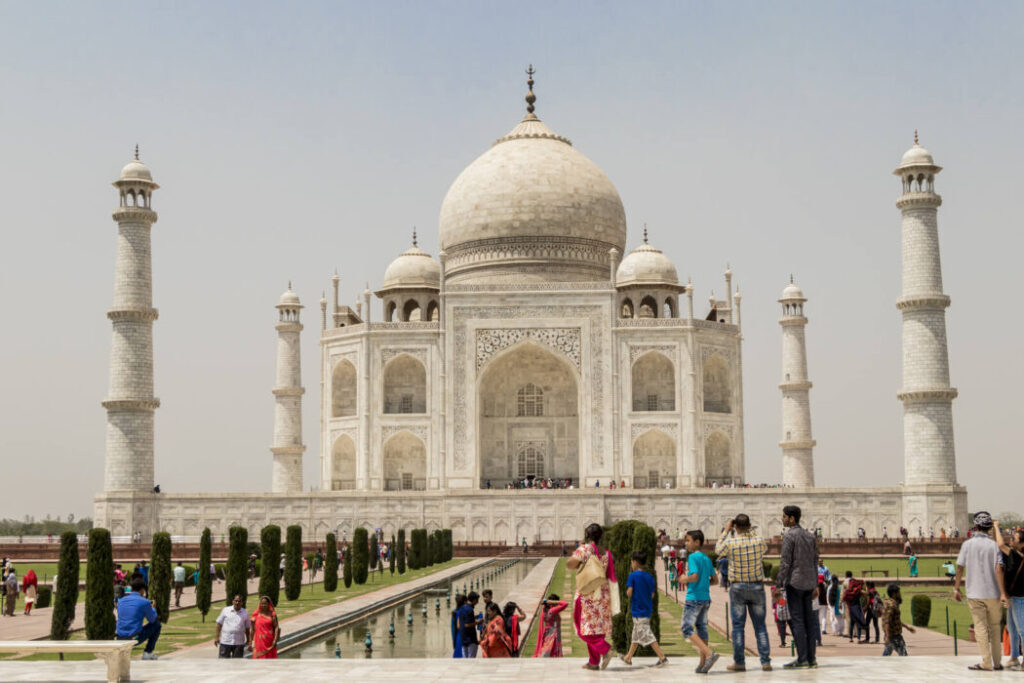
The Taj Mahal: A Monument to Love: Standing as a symbol of eternal love, the Taj Mahal in Agra is an awe-inspiring architectural marvel. This UNESCO World Heritage Site, built by Mughal emperor Shah Jahan for his beloved wife, is a must-visit destination for its intricate craftsmanship and breathtaking beauty.
Hampi: Ancient Ruins in a Surreal Landscape: The ancient city of Hampi, located in Karnataka, is a treasure trove of ruins and monuments that transport you back to the glorious Vijayanagara Empire. Wander amidst the fascinating structures and immerse yourself in the rich history of this captivating site.
Khajuraho: A Celebration of Love and Eroticism: Famous for its exquisite temples adorned with sensuous and erotic sculptures, Khajuraho in Madhya Pradesh is a testament to the artistic and architectural prowess of the Chandela Dynasty. The intricate carvings and stunning temple complexes offer a visual feast for the discerning traveler.
Ajanta and Ellora Caves: Masterpieces of Ancient Artistry: The Ajanta and Ellora Caves, located in Maharashtra, are masterpieces of ancient Indian art and architecture. These UNESCO World Heritage Sites feature stunning rock-cut sculptures and murals that provide a window into the country’s rich cultural history.
India’s Natural Wonders: From Mountains to Beaches

The Himalayas: A Trekker’s Paradise: The mighty Himalayas stretch across the northern part of India, offering a paradise for trekkers and adventure enthusiasts. From lush valleys and pristine lakes to snow-capped peaks, the region offers an array of breathtaking landscapes that will leave you spellbound.
Kerala Backwaters: A Blissful Cruise Experience: The tranquil backwaters of Kerala are a network of picturesque lagoons, canals, and lakes. Embark on a houseboat cruise to experience the region’s serene beauty, lush greenery, and the simple charm of traditional village life.
Rann of Kutch: The Spellbinding White Desert: The Rann of Kutch in Gujarat is an ethereal landscape of salt marshes that transform into a glistening white desert during the dry season. The mesmerizing vistas, vibrant local culture, and the annual Rann Utsav festival make this a must-visit destination.
Andaman and Nicobar Islands: Untouched Beaches and Marine Life: The idyllic Andaman and Nicobar Islands, nestled in the Bay of Bengal, are home to some of the most pristine and untouched beaches in India. The crystal-clear waters, vibrant coral reefs, and diverse marine life provide a haven for snorkeling and scuba diving enthusiasts.
A spiritual journey through India’s holy places
Varanasi: The Eternal City of Light and Death: One of the world’s oldest cities, Varanasi is a spiritual epicenter that draws millions of pilgrims every year. Witness the enchanting rituals, sacred temples, and the mesmerizing Ganga Aarti ceremony along the ghats of the holy Ganges River.
Rishikesh: The Yoga Capital of the World: Nestled in the foothills of the Himalayas, Rishikesh is a serene town that has become synonymous with yoga and spirituality. Attend a yoga retreat, meditate in an ashram, or bask in the peaceful ambiance of this charming destination.
Amritsar: The Golden Temple and Sikhism’s Holiest Shrine: The Golden Temple, or Harmandir Sahib, in Amritsar, is the holiest shrine for Sikhs and a symbol of spiritual solace. The gleaming gold-plated temple complex, which welcomes people from all faiths, is an experience that will leave you with a deep sense of tranquility.
Bodh Gaya: Where the Buddha Attained Enlightenment: Bodh Gaya, located in Bihar, is a sacred destination for Buddhists worldwide. It is here that Prince Siddhartha attained enlightenment under the Bodhi tree, becoming the Buddha. Visit the stunning Mahabodhi Temple and meditate in the serene atmosphere of this spiritual haven.
Celebrate India’s Colorful Festivals
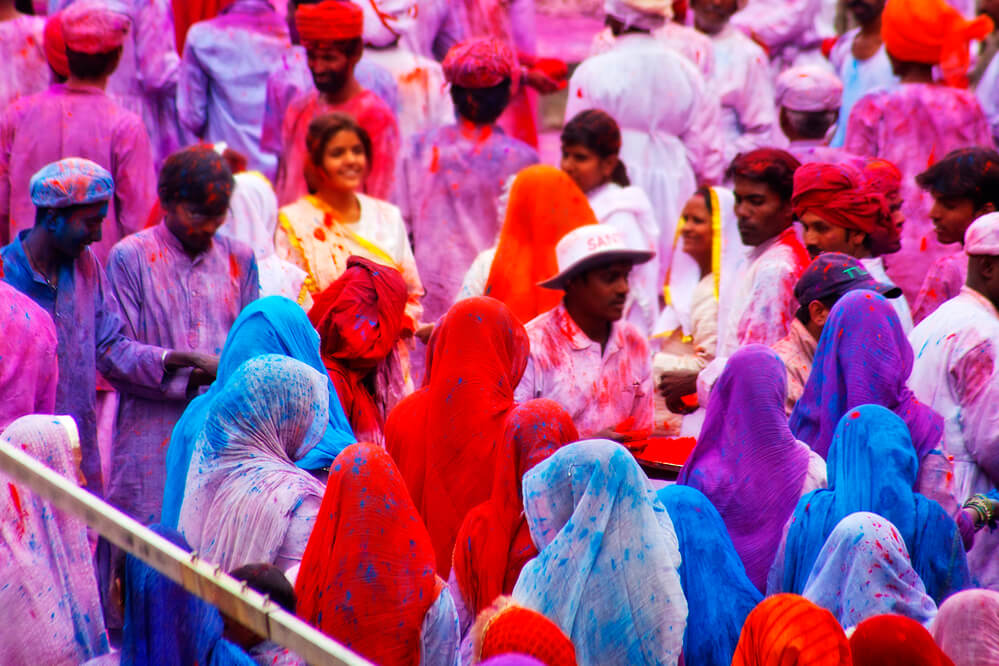
Diwali: The Festival of Lights: Diwali, the Festival of Lights, is one of the most popular and widely celebrated festivals in India. Marking the victory of light over darkness, this joyous occasion is celebrated with much fanfare, including fireworks, feasts, and the illuminating of homes with oil lamps and candles.
Holi: The Exuberant Festival of Colors: Holi is an exuberant festival that celebrates the arrival of spring and the triumph of good over evil. The boisterous celebration involves people playfully smearing each other with vibrant colors and drenching each other with water, creating an atmosphere of pure joy and excitement.
Navratri: Nine Nights of Dance and Devotion: Navratri is a nine-night festival dedicated to the worship of the Hindu Goddess Durga. The celebration involves various rituals, prayers, and vibrant Garba and Dandiya dance performances, showcasing the rich cultural heritage of India.
Pongal: A Harvest Festival of Gratitude: Pongal, primarily celebrated in Tamil Nadu, is a harvest festival that marks the beginning of the sun’s northward journey, known as Uttarayan. The four-day festival involves:
- Various rituals.
- The preparation of a special dish called Pongal.
- The gathering of family and friends in gratitude for a bountiful harvest.
What to Wear in India during your stay
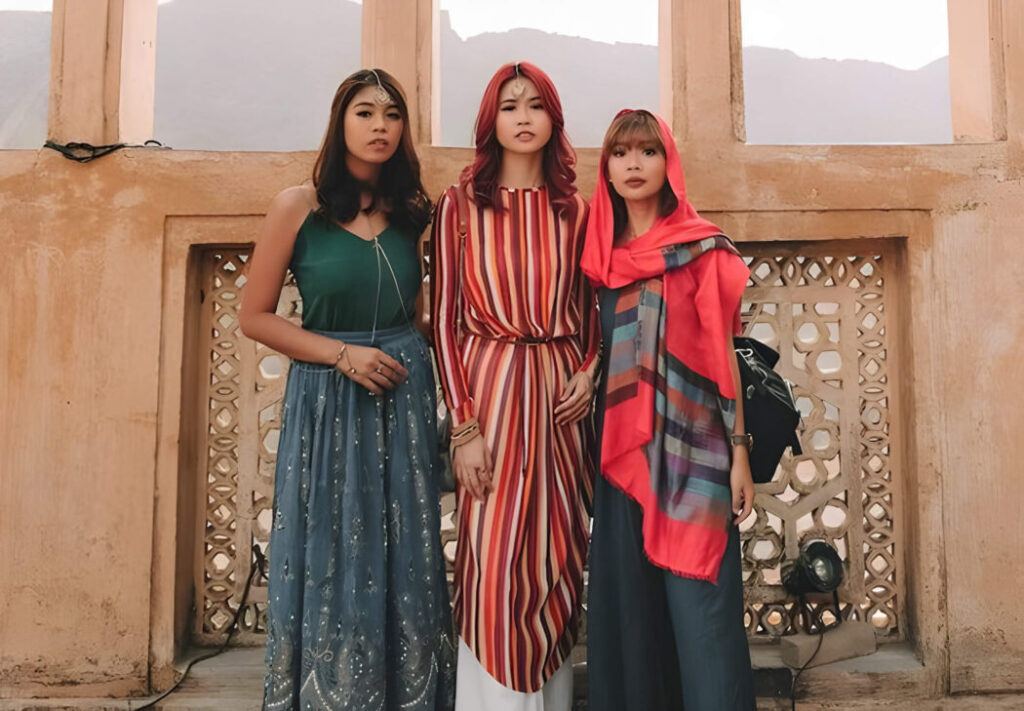
When planning your trip to India’s diverse and culturally rich country, it’s essential to consider what to wear in India during your stay. Adhering to local customs and dressing appropriately will show respect for the culture and help you blend in and feel more comfortable.
First and foremost, modesty is key when deciding what to wear in India. Opt for loose-fitting clothes that cover your shoulders, chest, and knees. For women, long skirts or pants and tops with sleeves are ideal. Men can choose from lightweight trousers, jeans, or linen pants paired with short or long-sleeved shirts.
Light, breathable fabrics such as cotton and linen are perfect for India’s often hot and humid climate. These materials will help keep you cool and comfortable while exploring bustling cities and serene countryside alike.
Modest attire is particularly important in religious sites like temples, mosques, and gurdwaras. Some locations may even require you to cover your head, so carrying a scarf or shawl is wise. Additionally, remember to remove your shoes before entering sacred spaces.
If your itinerary includes visiting the cooler regions of India, such as the mountainous areas in the north, be sure to pack some warm layers. Lightweight jackets, scarves, and hats will come in handy when the temperature drops.
Finally, comfortable and durable footwear is a must for navigating India’s diverse terrain. Closed-toe shoes or sandals with good support will serve you well as you explore the country’s many fascinating sights.
How to stay safe during your stay
Embarking on a journey to the enchanting land of India is undeniably a thrilling experience, but prioritizing safety is crucial. Before setting off, research your destination to familiarize yourself with local customs, traditions, and potential hazards. This awareness will help you avoid inadvertently offending locals or encountering dangerous situations. Additionally, ensure your belongings are secure, as crowded areas can be hotspots for petty theft and pickpocketing. Opt for essentials only, and consider a money belt or hidden pouch for valuable items.
When traveling within India, choose reputable transportation like registered taxis, autorickshaws, or ride-sharing services, avoiding unlicensed providers to minimize the risk of scams or hazardous driving. Maintaining good hygiene is also important, as food and water quality may vary throughout the country. Stick to well-established restaurants, avoid street food, and consume bottled or purified water. Dress modestly to show respect for India’s diverse culture and to blend in, reducing unwanted attention. When out at night, stay in well-lit, populated areas, and inform someone of your plans and estimated arrival time if traveling alone. Lastly, stay connected by keeping a charged phone and saving emergency contact numbers for local police and medical services, ensuring help is readily available if needed.
Local Transportation: How to Get Around in India

When exploring India, one of the primary concerns of travelers is how to get around and transport themselves from one place to another. There are a variety of transport options available in India, from air travel to car rental, trains, buses, and more. Air travel is the most convenient and fastest way to get from one place to another in India. There are numerous domestic airlines, both national and private, that offer competitive prices for flights between major cities.
In addition, the extensive railway network is one of the most popular ways to traverse the country. From affordable general-class tickets to luxurious first-class cabins, trains cater to all types of travelers. Long-distance journeys can be booked on the IRCTC website or through a travel agent, while short-distance trips can often be purchased at the station.
For those who prefer road travel, buses are a viable option. State-run buses, as well as private operators, provide services connecting cities and towns throughout the country. Comfort levels vary from basic non-air-conditioned buses to deluxe air-conditioned coaches. Tickets can be booked online or at bus stations.
Autorickshaws and cycle rickshaws are ubiquitous in India, offering a quick and affordable means of transport for short distances. Negotiating the fare beforehand or insisting on using the meter to avoid overcharging is important. Alternatively, app-based ride-sharing services like Uber and Ola are available in major cities, providing a convenient and reliable option for getting around.
Diverse Cuisines in India
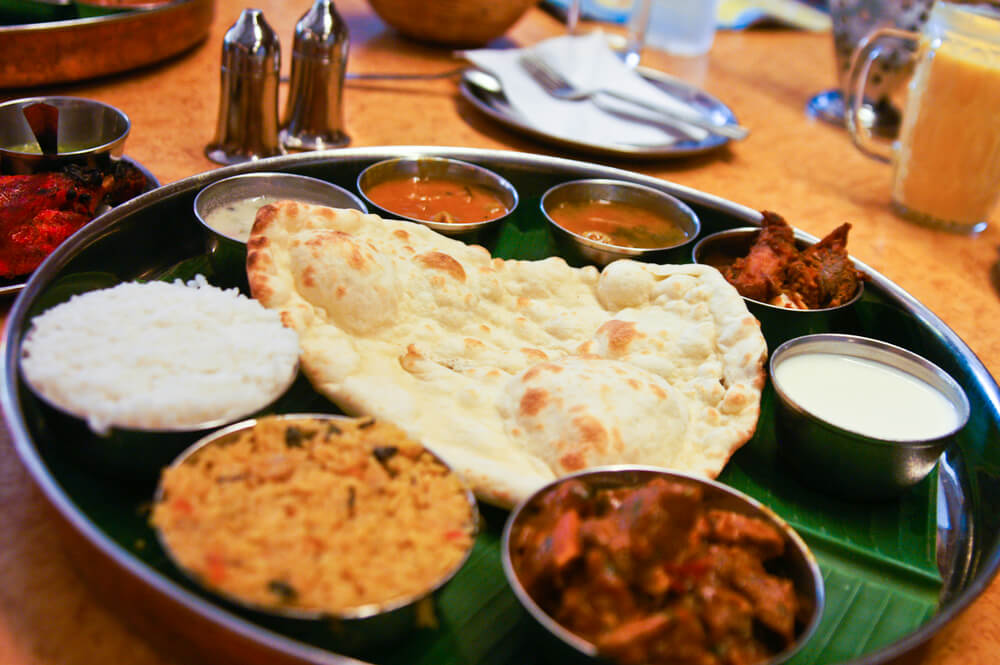
Diverse Cuisines in India are a testament to the country’s rich cultural heritage and regional diversity. With an array of flavors and ingredients, Indian cuisine is sure to satisfy any food enthusiast’s palate.
India’s culinary landscape is vast and varied, from the robust flavors of the north to the tangy and spicy dishes of the South. North Indian cuisine is characterized by the extensive use of dairy products, wheat, and aromatic spices. Popular dishes include butter chicken, dal makhani, and naan, often enjoyed with a refreshing yogurt-based raita.
Venturing to the south, one encounters a different world of flavors. Rice and coconut are staple ingredients, and the cuisine is noted for its tangy, spicy, and sour taste profiles. Iconic dishes such as dosa, idli, and sambar are beloved by locals and visitors alike.
East Indian cuisine is known for its delectable fish preparations, with dishes like maacher jhol and paturi stealing the spotlight. Sweet lovers will delight in the region’s famous desserts, such as rasgulla and sandesh.
The Western part of India offers a range of vegetarian delights. However, Gujarati cuisine, with its mild, sweet flavors and diverse textures, is a must-try for any food lover. Conversely, Maharashtra boasts spicy dishes like vada pav and pav bhaji that pack a punch.
Final Thoughts on Your Ultimate Travel Guide of India
In conclusion, the Ultimate Travel Guide of India is invaluable for those looking to explore this incredible country’s mesmerizing landscapes, rich culture, and diverse experiences. From navigating transportation options to discovering the finest local cuisines, understanding cultural nuances, and identifying the best accommodations for your needs, this comprehensive guide is designed to help you make the most of your journey to India.
Whether you are traveling for the first time, a solo adventurer, a couple seeking a romantic getaway, a family embarking on a memorable vacation, or a group of friends ready to create unforgettable memories, India has something for everyone. So as you embark on your adventure, remember to embrace the country’s vibrant spirit, immerse yourself in its unique traditions, and savor the enchanting experiences that await you.
Following the travel advice and recommendations in this guide, you’ll be well-prepared to navigate the intricacies of traveling in India, ensuring a safe, enjoyable, and unforgettable trip. So pack your bags, embark on the journey of a lifetime, and let the magic of India captivate your heart and soul.

Frequently asked questions for India
What kind of language do people in India speak?
India is a linguistically diverse country with more than 19,500 languages and dialects spoken. The primary language is Hindi, but many regional languages, such as Bengali, Telugu, Marathi, and Tamil, are also widely spoken. English is commonly used for official and administrative purposes and serves as a lingua franca among people from different linguistic backgrounds.
Is English a common language throughout all of India?
While English is not the native language for the majority of the population, it is widely spoken in cities and tourist areas, and most educated Indians can speak and understand English to some extent. In addition, many street signs, menus, and official documents are in English, making it easier for international travelers to navigate the country.
What kind of currency is utilized commonly in India?
The standard unit of currency in India is the Indian Rupee (INR), which is divided into 100 paise. Credit and debit cards from major providers, like Mastercard or Visa, are accepted at hotels, restaurants, and shops in urban areas. However, carrying cash for transactions in rural areas or local markets is a good idea. ATMs are widely available in cities and towns.
Do I need a visa to visit India?
Yes, a visa is required for most nationalities, including travelers from the United States and Canada. India offers an e-visa option for tourists, which can be obtained by applying online prior to travel. The process is relatively simple, and the e-visa is usually granted within a few days.
How many days are enough for India?
Determining the appropriate number of days to visit India largely depends on your personal interests, the regions you want to discover, and your preferred travel pace. As a country with an expansive landscape and a rich tapestry of cultures and attractions, it’s impossible to experience everything India has to offer in a single trip.
For newcomers, a trip lasting two to three weeks is typically recommended to visit some of India’s most iconic sites. This timeframe allows travelers to explore the renowned Golden Triangle (Delhi, Agra, and Jaipur) and other significant cities and attractions in North India, such as Varanasi, Amritsar, or the enchanting state of Rajasthan. To delve into South India, an additional two to three weeks is ideal for experiencing Kerala’s backwaters, Goa’s beaches, and the ancient temples and cultural landmarks of Tamil Nadu and Karnataka.
For those interested in wildlife safaris, spiritual retreats, or Himalayan treks, trip durations may vary based on chosen activities and locations. Ultimately, the optimal length for an Indian adventure hinges on personal preferences and the desired extent of immersion into the country’s diverse offerings.
What are the most important celebrations or events that take place each year?
India has a rich cultural heritage; annual celebrations like Diwali and Holi are observed with great fervor. Diwali, the Hindu Festival of Lights, is a five-day event taking place between October and November, symbolizing the victory of light over darkness. Holi, the Festival of Colours, occurs after the full moon in March and is celebrated with the throwing of colored powders and water. Other significant festivals include Eid al-Fitr, Christmas, Navratri, and Pongal.
Is there convenient access to wifi?
Access to the Internet is generally satisfactory in India’s major urban centers. Free wifi is available in many hotels, shopping malls, bars, and cafés. However, internet service may be subpar or unavailable in rural areas and smaller towns. International travelers can consider purchasing a local SIM card with a data plan for reliable internet access.
Is it possible to use my mobile phone in India?
Yes, you can use your mobile phone in India, provided that it is compatible with local networks. India uses GSM 900/1800 frequency bands for mobile services. Consult with your cellular service provider about available options, such as unlocking your phone or obtaining an inexpensive roaming package. You can also purchase a local SIM card after arriving in India.
Is it okay to drink the water from the tap?
It is highly recommended not to drink tap water in India, as it may be contaminated and cause health issues. Opt for bottled, filtered, or water treated with purification tablets. Additionally, avoid ice in drinks and ensure that fruits and vegetables are washed with clean water.
How clean are the restrooms that are available to the public?
Public restrooms in India vary in cleanliness and facilities. Two types of toilets can be found: Western-style seated toilets and Asian-style squat toilets. Public restrooms, especially in busy areas, may not always be clean, and toilet paper and soap may not be provided. It’s advised to carry tissues and hand sanitizer with you.
When is the ideal time to go sightseeing in India?
The best time to visit India for sightseeing is during the cooler months between October and March. During this period, the weather is generally sunny, dry, and mild, making exploring the country’s diverse landscapes and attractions comfortable.
What kinds of modes of transportation are available in India?
India offers various modes of transportation, including trains, buses, taxis, autorickshaws, and domestic flights. For long-distance travel, trains, and flights are popular choices. In cities, travelers often use taxis, autorickshaws, and ride-sharing services like Uber or Ola. For a more immersive experience, cycle rickshaws and walking tours can be enjoyable options.
Should I go to the northern or southern part of India?
The choice between visiting northern or southern India depends on your interests and preferences. First-time travelers often choose the northern region to see iconic landmarks like the Taj Mahal, along with the rich history of Rajasthan and the spiritual city of Varanasi. Southern India offers beautiful beaches in Goa, unique houseboat experiences in Kerala, and vibrant cities like Chennai and Bangalore. India’s vastness means that each region offers distinct weather, landscapes, and cultural experiences.
Is India a good place to travel with your family?
India is an excellent destination for family travel, offering a wide range of activities, such as exploring forts and palaces, wildlife safaris, beaches, and museums. Customized itineraries can be designed to cater to your family’s preferences and interests, ensuring a memorable and enjoyable experience for everyone.
Is it typical to leave a tip in India?
While tipping is not mandatory in India, it is appreciated if you receive exceptional service from guides, drivers, or hotel staff. As a general rule, you can tip around 10% of the bill or service charge. Tipping is not expected but appreciated as a gesture of gratitude for excellent service.

